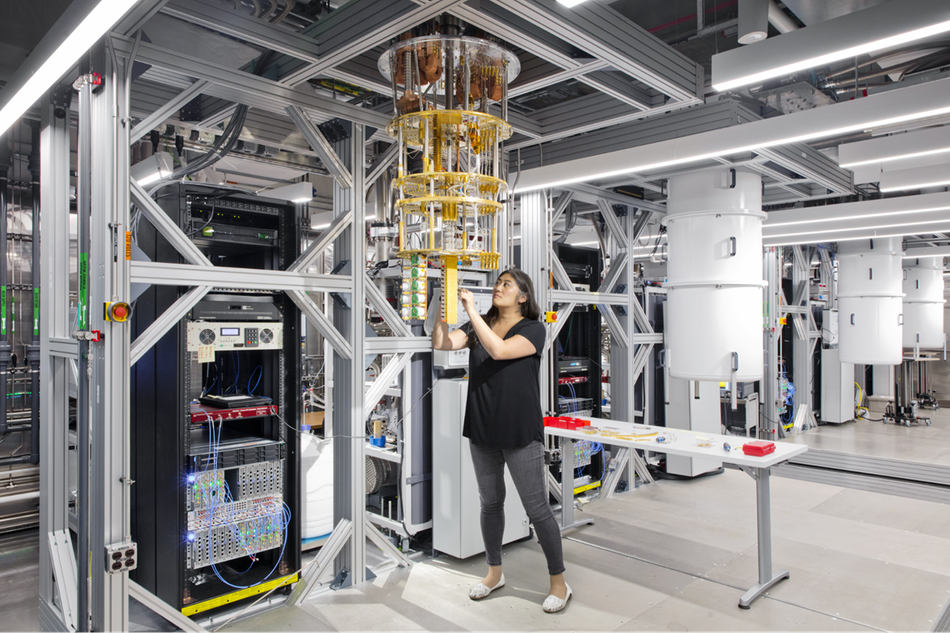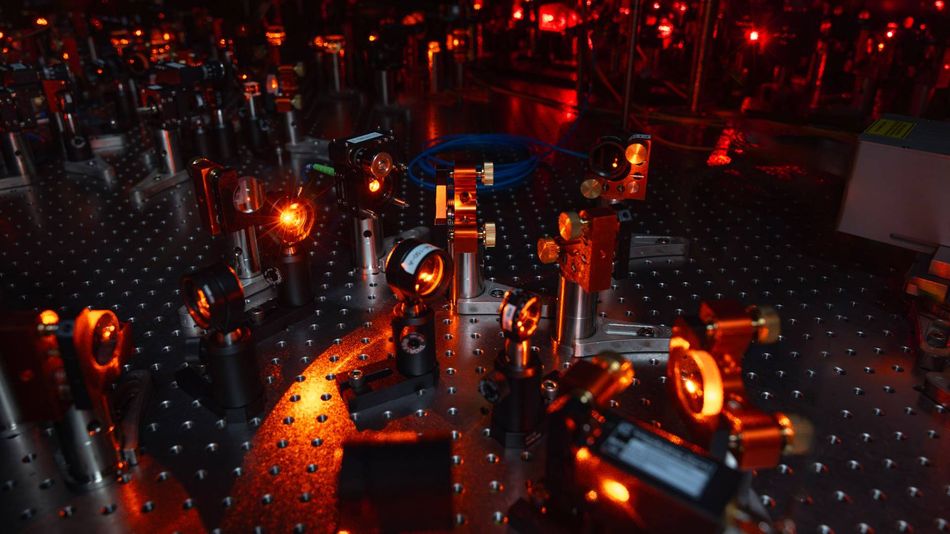Breakthroughs in Quantum Computing
Article #2 of Engineering the Quantum Future Series: Recent breakthroughs in quantum computing made substantial strides, driving closer to practical applications that could revolutionize industries by solving complex computational problems more efficiently.
This is the second article in a six-part series featuring articles on "Engineering the Quantum Future". The series explains the revolutionary advancements in quantum computing and their implications for various industries. Each article discusses a specific aspect of this transformative technology, from the fundamental concepts of quantum computing to the practical applications and challenges. This series is sponsored by Mouser Electronics. Through the sponsorship, Mouser Electronics promotes innovation and the exchange of knowledge, aiming to harness the revolutionary capabilities of quantum computing for a smarter and safer technological future.
Introduction
2023 was a landmark year for quantum computing, with innovative breakthroughs promising to reshape our technological landscape and revolutionize how we solve complex problems and process information. From IBM's groundbreaking quantum chips to pioneering experiments in manipulating spin waves, the simulation of molecular structures, and quantum communication, the landscape of quantum computing is undergoing a transformation that will redefine our technological future.[1]
With quantum computing transitioning from theoretical exploration to practical implementation, the time to delve into its developments is now. Though the journey is not without hurdles, we see a clear trend in collaborative efforts by scientists, engineers, and industry leaders, paving the way for a future where quantum computing plays a central role in our lives, from pharmaceuticals to telecommunications.
IBM's Quantum Computing Milestone
From the broad landscape of quantum computing breakthroughs in the past year, IBM's recent advancements stand out as a testament to the rapid evolution and growing practicality of quantum technologies. IBM has ushered in a new era of quantum utility, marked by significant milestones and innovations that redefine the capabilities and applications of quantum computing.
IBM's recent unveiling of the Condor processor represented a monumental leap in quantum computing with its 1,121 superconducting qubits, shattering the 1,000-qubit barrier and showcasing IBM's cross-resonance gate technology by pushing the limits of scale, yield, and design in quantum chip manufacturing.[2] The Condor processor, with its 50% increase in qubit density and over a mile of high-density cryogenic flex IO wiring within a single dilution refrigerator, is a model for future hardware design and offers performance comparable to IBM's previous 433-qubit Osprey processor while solving critical scalability challenges.
In parallel, IBM introduced the Quantum Heron processor on the IBM torino quantum system, featuring 133 fixed-frequency qubits with tunable couplers.[3] This development yields three to five times better device performance over the previous flagship 127-qubit Eagle processors, virtually eliminating crosstalk. The Heron processor embodies four years of research and development, laying the foundation for IBM's hardware roadmap and signaling a significant step forward in quantum processor technology.
Moreover, IBM's Quantum System Two is designed for scalable quantum computation and combines cryogenic infrastructure with advanced control electronics and classical runtime servers. It is set to be the bedrock for scalable quantum computation over the next decade, featuring three IBM Quantum Heron processors and embodying a modular architecture that supports parallel circuit executions for quantum-centric supercomputing.
With tools like circuit knitting enhancing the reach of quantum computation and new algorithms emerging for multiple quantum circuits, IBM's approach points towards a heterogeneous computing architecture, essential for realizing quantum-centric supercomputing and paving the way for utility-scale quantum applications.
Spin Waves: A New Frontier
Amidst the corporate achievements and technological advancements led by giants like IBM, the academic world is pushing the capabilities of quantum technology forward. Universities and research institutions are making significant strides in quantum computing, contributing to the field's momentum with groundbreaking experiments and discoveries. One such example is the pioneering work on spin waves at the Delft University of Technology.[4]
In a groundbreaking experiment at the university, quantum physicists successfully controlled and manipulated spin waves on a chip using superconductors.
Spin waves, which are information-transmitting waves found in magnetic materials, have long been considered a potential cornerstone for energy-efficient technology, including quantum computing. This new development opens new possibilities for using these waves to connect a quantum computer’s components or create energy-efficient information technology.
The experiment involved a novel approach where a spin wave generates a magnetic field, prompting a superconductor to produce a supercurrent. The supercurrent acts as a mirror, reflecting the magnetic field back to the spin wave and allowing for more precise control over the wave's movement.
The research lays the groundwork for designing devices that combine spin waves and superconductors. These devices could produce minimal heat and sound waves, leading to the development of components like frequency filters or resonators found in cell phone circuits. More importantly, this technology could facilitate connections between qubits in quantum computers.
Molecular Structures and Quantum Simulation
Another exciting academic-led development in quantum computing is its application in simulating molecular structures at the atomic scale. This capability is expected to revolutionize various chemistry-based domains, including the development of batteries, pharmaceuticals, and fertilizers. By accurately simulating molecular interactions, quantum computers can help design more efficient and effective products.
More recently, a team of physicists from Princeton University successfully entangled individual molecules, creating quantum states where the molecules remain correlated regardless of distance.[5] Quantum entanglement (QE) is a phenomenon in quantum physics where pairs or groups of particles interact in such a way that the quantum state of each particle cannot be described independently of the state of the others, even when the particles are separated by a considerable distance.

QE is crucial for the advancement of quantum computing, and thus, the discovery holds significant implications for practical applications of quantum computers. Due to their complexity, achieving controllable QE with molecules has been a long-standing challenge. The Princeton team, using a sophisticated tweezer array system, managed to manipulate individual molecules into entangled states. The method demonstrated the viability of molecules as a platform for quantum science, particularly in quantum information processing and simulations of complex materials.
Shor's Algorithm: A Quantum Leap in Number Factoring
Of course, the domain of quantum computing extends far beyond the microscopic, reaching into macroscopic applications that could revolutionize everything from cryptography and drug discovery to material science and beyond, fundamentally altering how we approach complex problems across disciplines. The leap from simulating the fundamental building blocks of nature to redefining the essence of cryptographic security illustrates the versatile power of quantum technology and leads us to advancements in Shor’s algorithm.
In 1994, Peter Shor, an MIT mathematician, introduced a quantum algorithm that could significantly expedite the process of finding prime number factors, a key component of data encryption methods used for Internet communications. Shor’s algorithm, a quantum algorithm capable of factoring large numbers exponentially faster than classical algorithms, has continued to garner attention, and for decades, it has stood as a testament to the potential of quantum computers. The algorithm highlights the potential of quantum computing to tackle problems that are currently infeasible for classical computers, such as decrypting certain cryptographic systems.
Recent developments, however, have introduced a new quantum algorithm by Oded Regev of New York University, potentially surpassing Shor’s method in efficiency.
Regev's algorithm, detailed in a preprint on the arXiv server, proposes a more efficient approach to factoring large numbers, potentially requiring fewer quantum gates. This advancement could enable smaller quantum computers to break encryption keys or allow larger machines to decode them more quickly.[6] The algorithm represents the first substantial improvement on Shor’s algorithm in 30 years, reducing the number of gates needed from n2 to n1.5 for an n-bit integer.
The new algorithm has garnered interest from the quantum computing community, with experts like Vinod Vaikuntanathan from MIT and Kenneth Brown from Duke University acknowledging its potential impact.[7] However, Regev’s method also presents challenges, particularly in quantum memory requirements, which could increase the overall cost of the algorithm.
Of course, as quantum computing continues to evolve, there's a possibility that internet encryption might shift to quantum-resistant methods like lattice cryptography. Nonetheless, algorithms like those of Regev and Shor could still have applications, such as decrypting recorded internet traffic from the past. Perhaps most importantly, the novelty of Regev’s work is expected to inspire further innovations in quantum cryptography, a field ripe for significant breakthroughs.
Beyond Processor Benchmarks: The Shift in Focus
Another recent pivotal development in the quantum computing field was the shift from emphasizing processor benchmarks to focusing on practical implementations. This transition is vital for transforming quantum computing from a theoretical concept into an applied technology with real-world applications. An updated analysis for 2023 projects indicates that industries like automotive, chemicals, financial services, and life sciences could see an economic impact of up to $1.3 trillion by 2035, thanks to quantum computing.[8]
To harness the full potential of quantum computers, it's crucial to focus on extensive application research beyond developing isolated quantum algorithms. Such research involves identifying applications that can benefit from quantum solutions and integrating these technologies into existing computational workflows. This task is challenging, requiring collaboration across disciplines, including quantum information scientists, domain experts, and business leaders, while navigating the constraints of current quantum computers and preparing for future applications with uncertain specifications and timelines.
The process involves developing the right capabilities and knowledge, which could take several years due to the steep and interdisciplinary learning curve.
Critical technologies still need to be developed to integrate quantum computing into existing workflows, and application research will continue to guide the quantum industry.
Quantum Modularization
In architecture, too, quantum broke through some earlier barriers, with quantum modularization emerging as a transformative trend in developing large-scale quantum computers.
Quantum modularization marks a significant advancement in quantum computing, introducing scalable and flexible architectures that allow for cost-effective upgrades and enhanced system accessibility. This concept—inspired by the modular revolution in traditional computing—brings resilience, customization, and security to the forefront of quantum technology. Businesses can now tailor their quantum systems to specific requirements, optimizing for various applications without requiring complete system overhauls. Modular designs also support interoperability among different quantum technologies, such as ion traps and superconducting quantum computers, enabling the selection of the most appropriate technology for specific tasks.
Crucially, modularity addresses the inherent fragility of quantum systems by allowing for targeted repairs and upgrades, thereby reducing downtime and maintenance costs. It also plays a crucial role in enhancing cybersecurity, offering strategies like private cloud access and secure module ring fencing to protect against data breaches. The shift towards modular quantum computing streamlines research and development efforts by focusing on individual components and paves the way for quantum networking, where interconnected quantum processing units work in concert to achieve unprecedented computing power. As the quantum computing industry evolves, the practical implementation of modular systems is set to redefine the landscape, making quantum technology more accessible and adaptable for businesses worldwide.
Advances in Quantum Communication
From landscapes to seascapes, quantum technology is also making waves on the communication front. Recent advancements in quantum communication have significantly enhanced the techniques for secure data transmission using quantum principles. A notable achievement in this field is the demonstration of quantum communication over a subsea optical fiber cable. This development, led by euNetworks Fiber UK Ltd., involved a successful quantum link between the UK and Ireland over the 224 km Rockabill subsea network.[9] This marks a significant milestone in quantum communication, pushing the boundaries of secure data transmission over long distances and under challenging conditions.
Teleportation of Quantum Information
Another groundbreaking advancement is the teleportation of quantum information over distances exceeding 1,200km, facilitated by the Micius satellite.[10] This development demonstrates the potential for quantum communication to operate over vast distances, far exceeding the capabilities of traditional communication methods.
Quantum Bits Transfer Between Microchips
From long distances to very tiny ones, researchers from the University of Sussex and Universal Quantum have made strides in transferring quantum bits (qubits) between quantum computer microchips.[11] This development is crucial for the practical implementation of quantum computing, enabling the integration of multiple quantum systems and enhancing the scalability of quantum networks.
A key aspect of quantum communication is its inherent security against eavesdropping. The principle that particles of light (photons) can transmit data in a highly fragile state along optical cables ensures that any interference, such as attempts to manipulate or steal data, causes the particles to collapse. This feature is particularly important for securely transmitting sensitive information, like bank details, making quantum communication a robust solution for protecting data in transit.
Collaborative Breakthroughs in Quantum Networking
Good communication is paramount, quantum or otherwise, and 2023 also saw some excellent academic and corporate networking pushing quantum technology forward. Amazon Web Services (AWS), in collaboration with Harvard University, achieved a breakthrough in quantum networking that could enhance the speed and efficiency of classical telecom networks.[12] Researchers developed a new method for packaging optical fibers that addresses the long-standing issue of data degradation over distances. The method involves connecting tapered ends of optical fibers and devices, such as quantum repeaters, allowing for a gradual and stable light transfer. The interface's resistance to minor displacements, like those caused by traffic noise, makes it suitable for real-world applications.
The AWS innovation is effective at cryogenic temperatures and can also be integrated with modulators used in high-speed telecommunication networks. This compatibility signifies a step towards more efficient interfaces between quantum and classical hardware, paving the way for the widespread adoption of quantum computers and networks.
Enhanced Error Correction Techniques
Wherever there are breakthroughs, though, there are also errors. A major focus in quantum computing has been the development of enhanced error correction techniques. Given the sensitive nature of quantum computers, which makes them prone to errors, robust error correction methods are vital for their reliability and practicality. Researchers from the RIKEN Center for Quantum Computing have made significant strides in this area by employing machine learning (ML) for error correction.[13] They have developed an autonomous correction system that, despite being approximate, can efficiently determine the best ways to correct errors. This system leverages ML to search for error correction schemes that minimize device overhead while maintaining effective error correction performance.
The researchers focused on an autonomous approach to quantum error correction, where a specially designed artificial environment eliminates the need for frequent error-detecting measurements. This approach is particularly relevant for bosonic qubit encodings, which are used in some of the most promising quantum computing machines based on superconducting circuits. Bosonic qubit encodings represent a complex optimization task in the vast search space of quantum computing. The team addressed this challenge using reinforcement learning, an advanced ML method where an agent learns and optimizes its action policy by exploring an environment.
Furthermore, the research group discovered that a surprisingly simple, approximate qubit encoding could significantly reduce device complexity compared to other proposed encodings. The simpler encoding outperformed its competitors in error correction capabilities. This finding is crucial, as it suggests that less complex quantum computing machines can be highly effective in error correction, making quantum computing more accessible and practical.
In a similar fashion, researchers at Google Quantum AI have achieved a significant breakthrough in quantum error correction.[14] They demonstrated that computational error rates could be reduced by increasing the number of qubits used for quantum error correction.
Amphenol RF SMP Connectors for High-Frequency Precision

Amphenol RF SMP Connectors are crafted for high-frequency applications, featuring a subminiature interface comparable to MMCX connectors but with an extended frequency range up to 40GHz. These connectors are essential in miniaturized high-frequency coaxial modules, available in both push-on and snap-on mating styles to ensure quick and secure connections. Ideal for PCB interconnects, the design includes a male connector on each board and a female-to-female bullet adapter, allowing for flexibility and alignment between connectors. This system accommodates both radial and axial misalignments, making it suitable for demanding environments in aerospace, broadband, and telecom sectors.
Conclusion
2023 was a transformative year for quantum computing, marked by remarkable achievements and promising trends that extended beyond academia to practical, real-world applications. These developments, led by collaborations between industry giants and leading universities, pave the way for quantum technologies that promise to revolutionize fields like cryptography, medicine, and energy.
The progress made in quantum error correction and network efficiency highlights a shift towards operational quantum systems, edging closer to achieving quantum supremacy. This year's achievements highlight the growing capabilities of quantum computers and hint at their future potential to solve some of humanity's most challenging problems.
This article was initially published in "METHODS: Engineering the Quantum Future," an e-magazine by Mouser Electronics. It has been substantially edited by the Wevolver team and Ravi Y Rao. It's the second article in the Engineering the Quantum Future Series. Upcoming articles will introduce readers to more trends and technologies transforming quantum computing.
The introductory article explores the current state of quantum computing, highlighting its challenges and potential
The first article dives into the foundational concepts of quantum computing, covering its theoretical basis, technological evolution, and potential applications
The second article takes a look at some transformative breakthroughs in quantum computing
The third article examines the role of quantum computing in enhancing energy efficiency
The fourth article explains quantum interconnectivity, detailing how linking quantum processors can amplify computing power
The fifth article addresses how the advancements in quantum capabilities pose significant challenges to traditional encryption methods and cybersecurity
The sixth article discusses the technical and ethical challenges of quantum computing as the technology progresses
References
[1] IBM Quantum. IBM Quantum Computer Demonstrates Next Step Towards Moving Beyond Classical Supercomputing. IBM Newsroom. Available from: https://newsroom.ibm.com/2023-06-14-IBM-Quantum-Computer-Demonstrates-Next-Step-Towards-Moving-Beyond-Classical-Supercomputing. Accessed June 26, 2024.
[2] Exclusive: A Closer Look at IBM’s Heron and Condor Quantum Processors. All about Circuits. Available from: https://www.allaboutcircuits.com/news/closer-look-at-ibms-heron-and-condor-quantum-processors/
[3] The hardware and software for the era of quantum utility is here. Jay Gambetta. IBM. Available from: https://www.ibm.com/quantum/blog/quantum-roadmap-2033
[4] Delft University of Technology. (2023, October 26). Controlling waves in magnets with superconductors for the first time. ScienceDaily. Retrieved June 30, 2024 from www.sciencedaily.com/releases/2023/10/231026171429.htm
[5] Garlinghouse T. Physicists ‘entangle’ individual molecules for the first time, bringing about a new platform for quantum science. Office of the Dean for Research, Princeton University. 2023 Dec 7. Available from: https://www.princeton.edu/news/2023/12/07/physicists-entangle-individual-molecules-first-time-bringing-about-new-platform
[6] Regev O. A more efficient quantum algorithm for integer factorization. [Internet]. 2023 Aug [cited 2024 Jun 26]. Available from: https://arxiv.org/abs/2308.06572
[7] Ragavan S, Vaikuntanathan V. Space-efficient and noise-robust quantum factoring. arXiv. 2023 Oct 2 [cited 2024 Jun 26]. Available from: https://arxiv.org/abs/2310.00899
[8] Quantum Technology Monitor. McKinsey & Company; 2023 Apr.
[9] University of York. First time test of UK / Ireland quantum communications with underwater cable. 2023 Oct 3. Available from: https://www.york.ac.uk/news-and-events/news/2023/research/quantum-communications-underwater-cable/
[10] Juan Yin et al. ,Satellite-based entanglement distribution over 1200 kilometers.Science356,1140-1144(2017).DOI:10.1126/science.aan3211
[11] EurekAlert! UK Scientists make major breakthrough in developing practical quantum computers that can solve big challenges of our time. [Internet]. Washington: American Association for the Advancement of Science (AAAS). 2023 Feb 8. Available from: https://www.eurekalert.org/news-releases/979109
[12] AWS and Harvard University researchers reported a breakthrough in quantum networking that improves data transmission over optical fibers. Tech Monitor. 2023 Oct 16. Available from: https://techmonitor.ai/technology/infrastructure/aws-claims-quantum-networking-breakthrough
[13] RIKEN. Machine learning contributes to better quantum error correction. [Internet]. Wako (Japan): RIKEN Center for Quantum Computing; 2023 Sep 8. Available from: https://www.riken.jp/en/news_pubs/research_news/pr/2023/20230908_2/index.html
[14] Nature Editorial. Google’s quantum computer hits key milestone by reducing errors [Internet]. Nature; 2023 Feb 22. Available from: https://www.nature.com/articles/d41586-023-00536-w
About Mouser Electronics
Mouser Electronics is a worldwide leading authorized distributor of semiconductors and electronic components for over 1200 industry-leading manufacturers. We specialize in the rapid introduction of...
202 Posts


